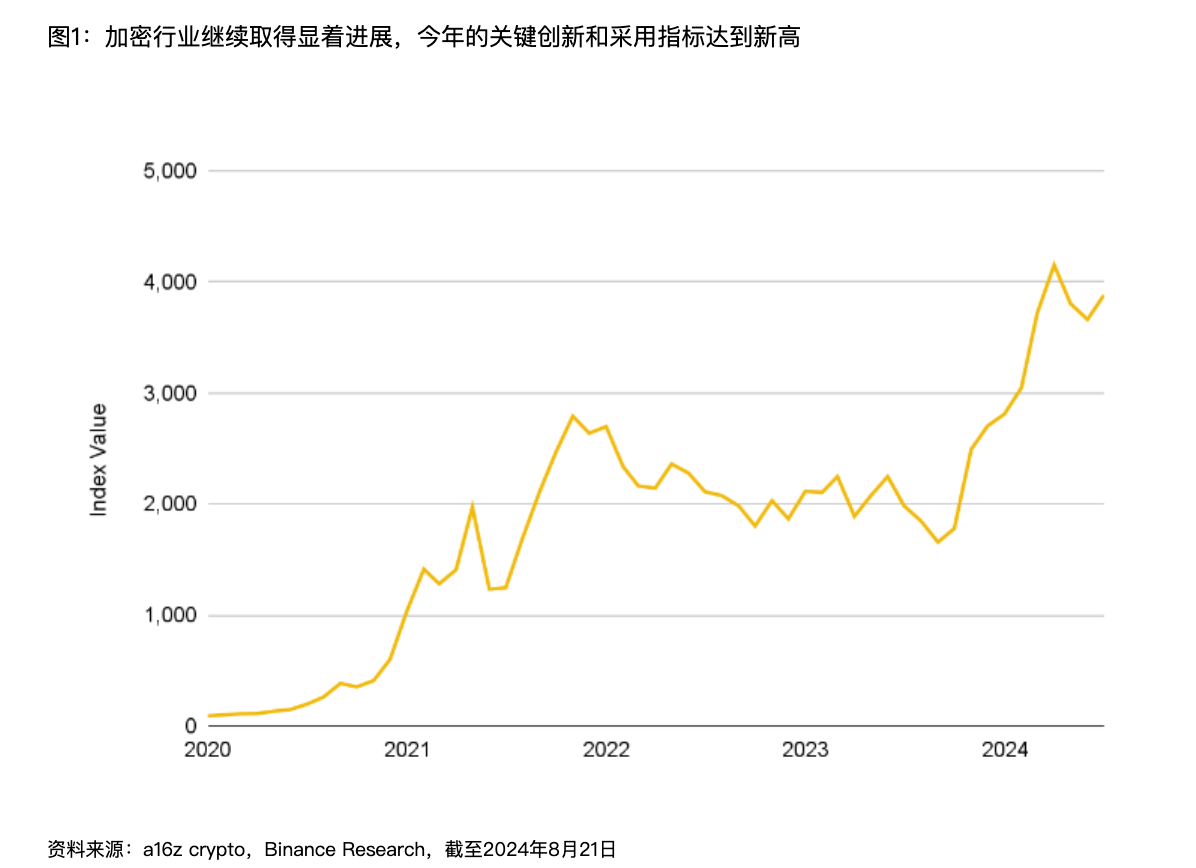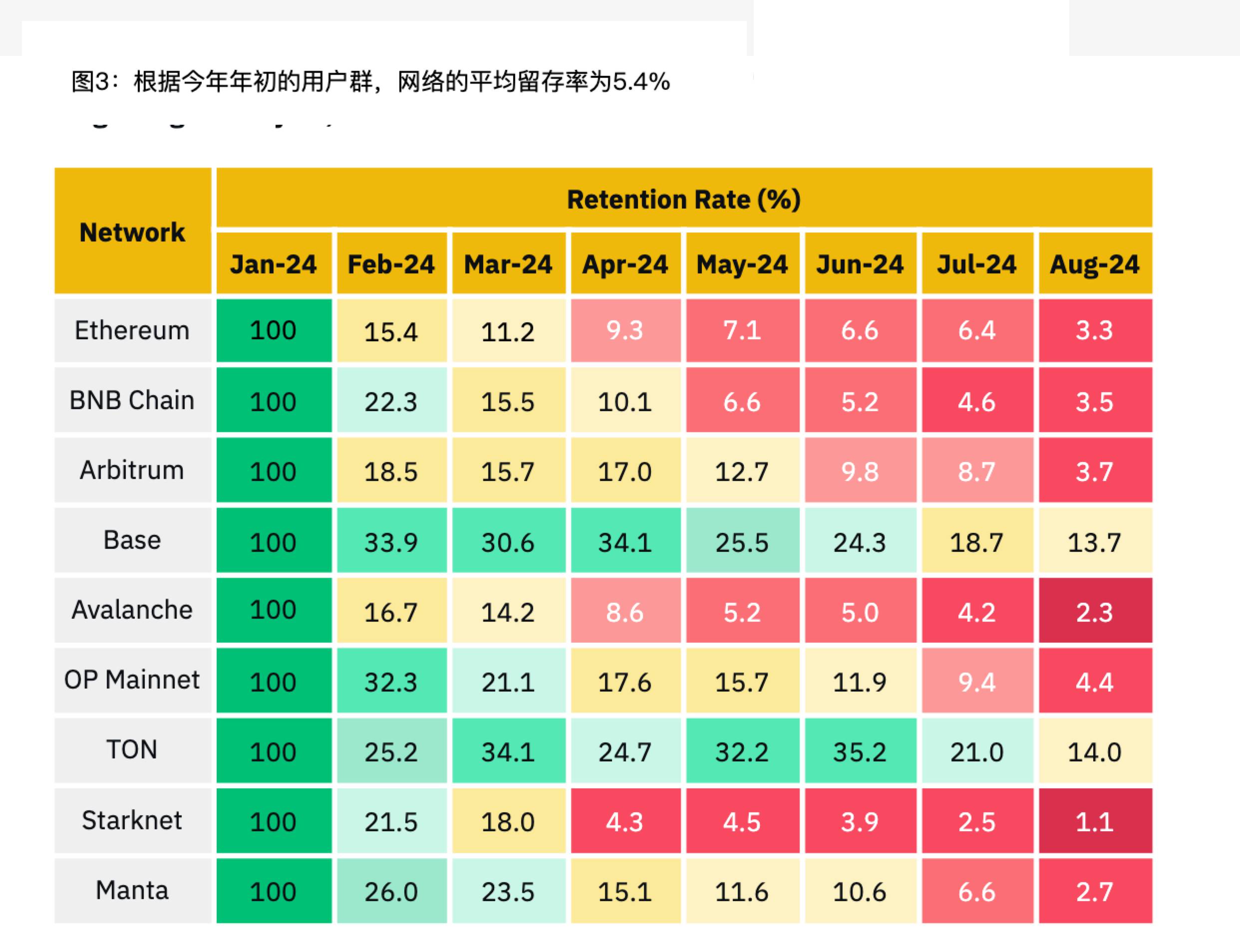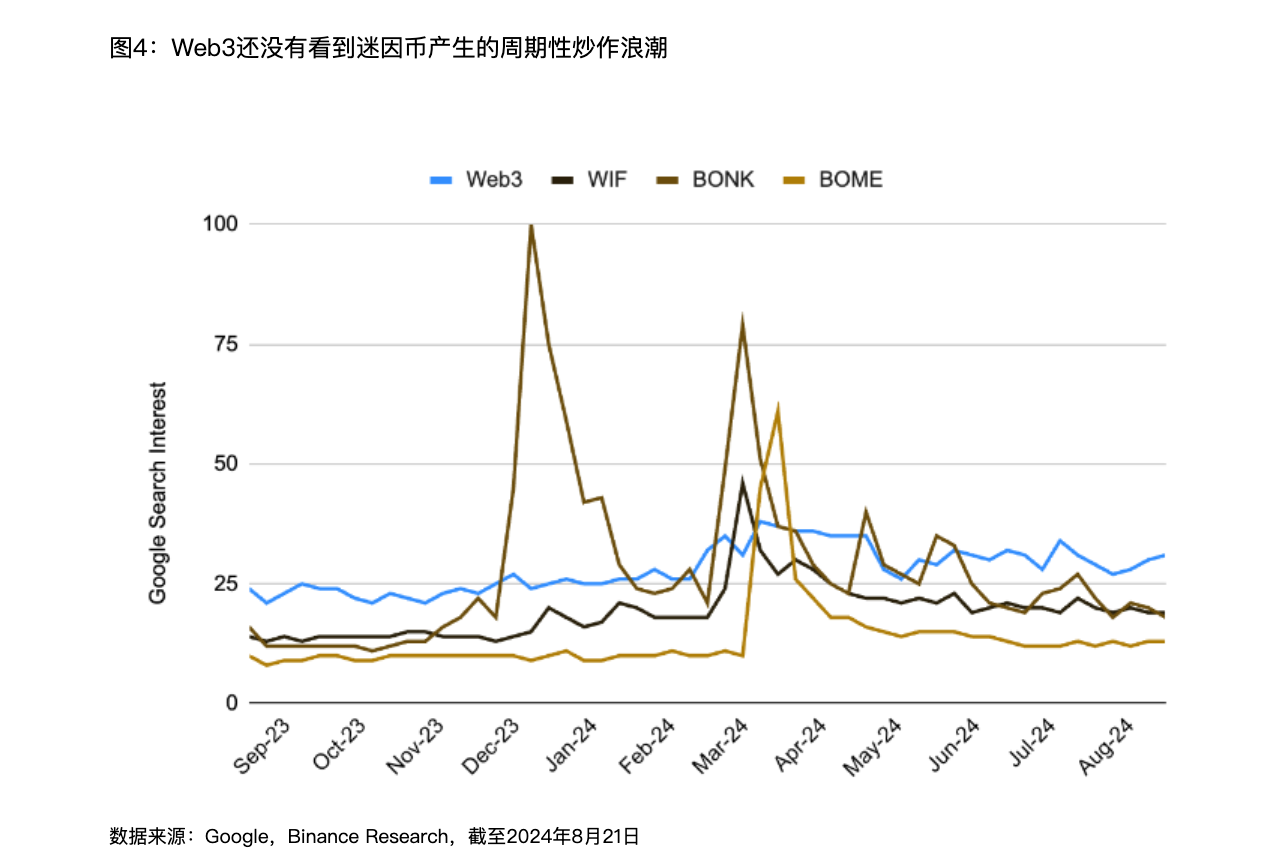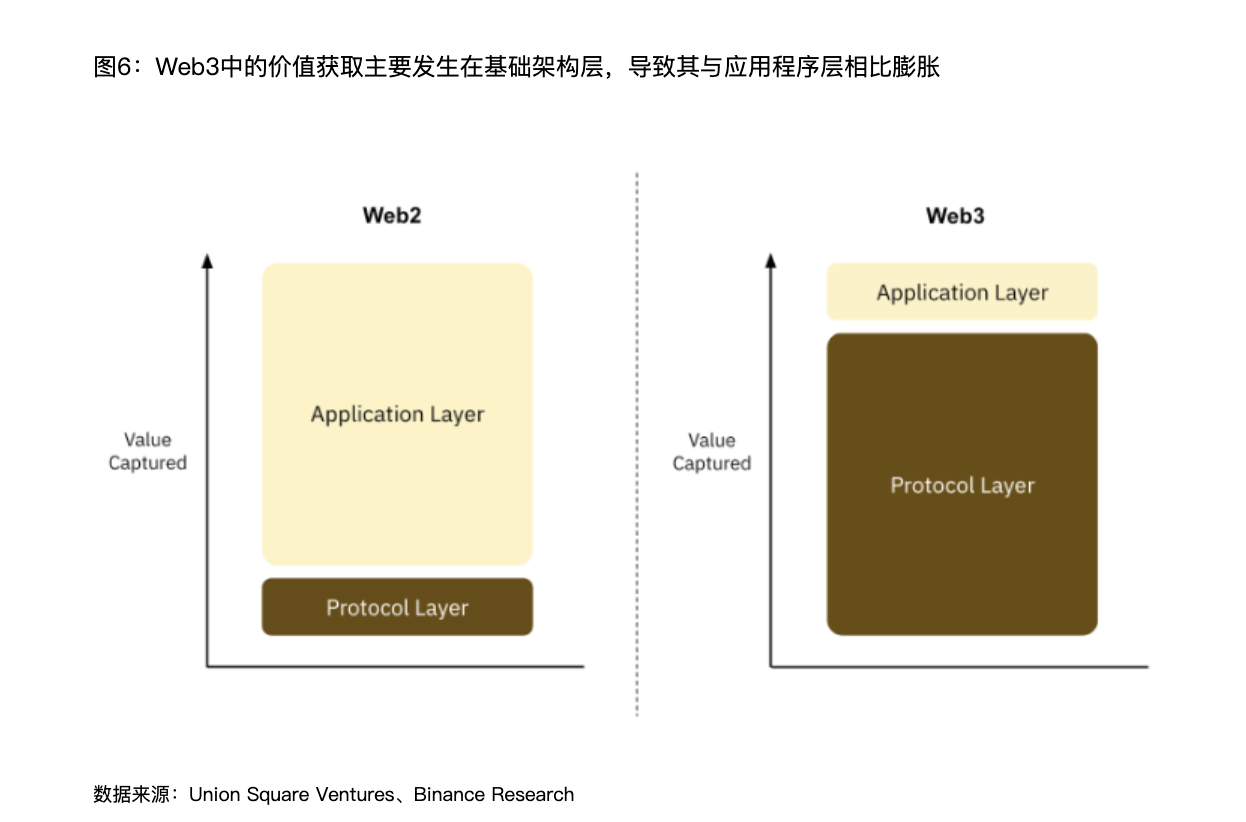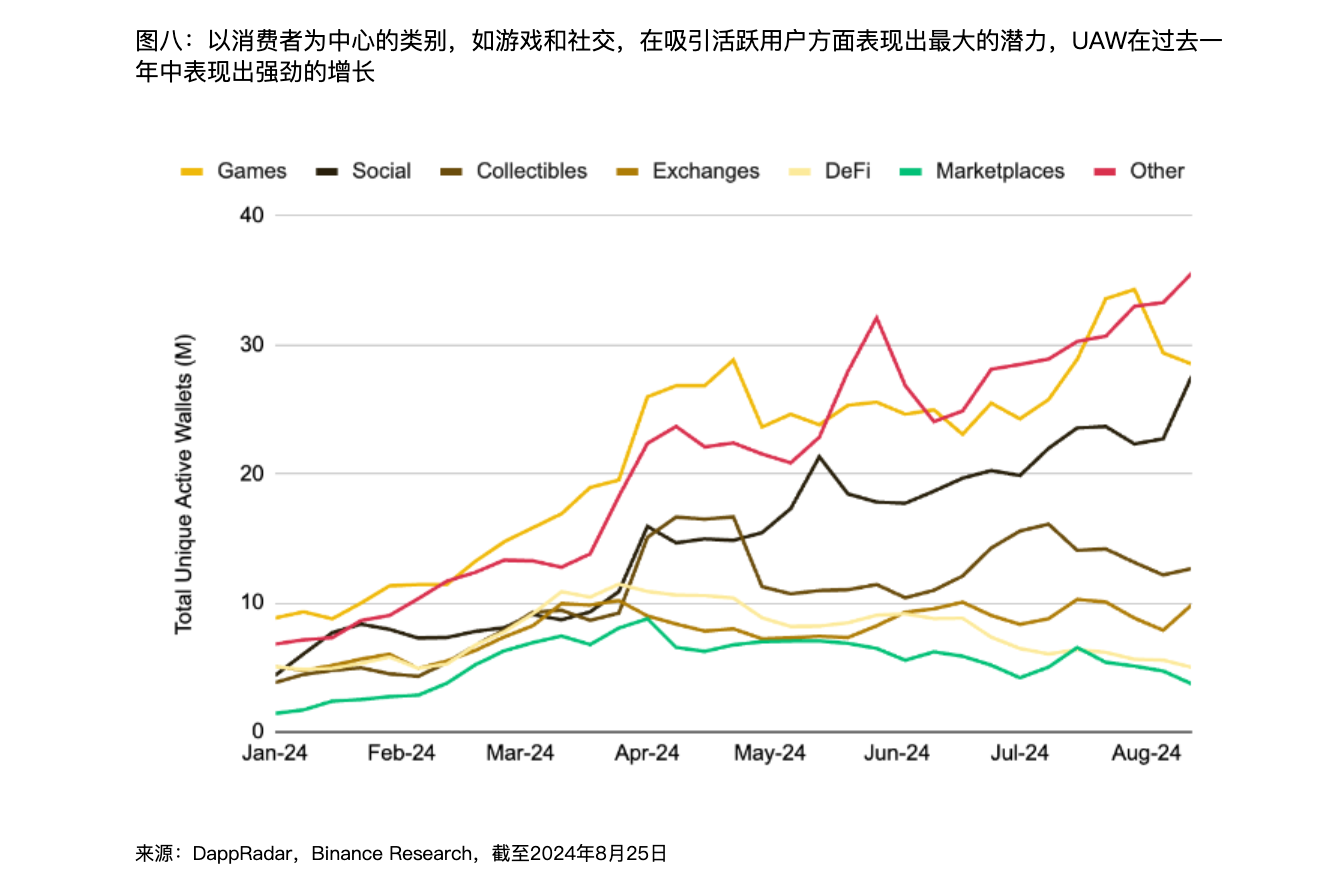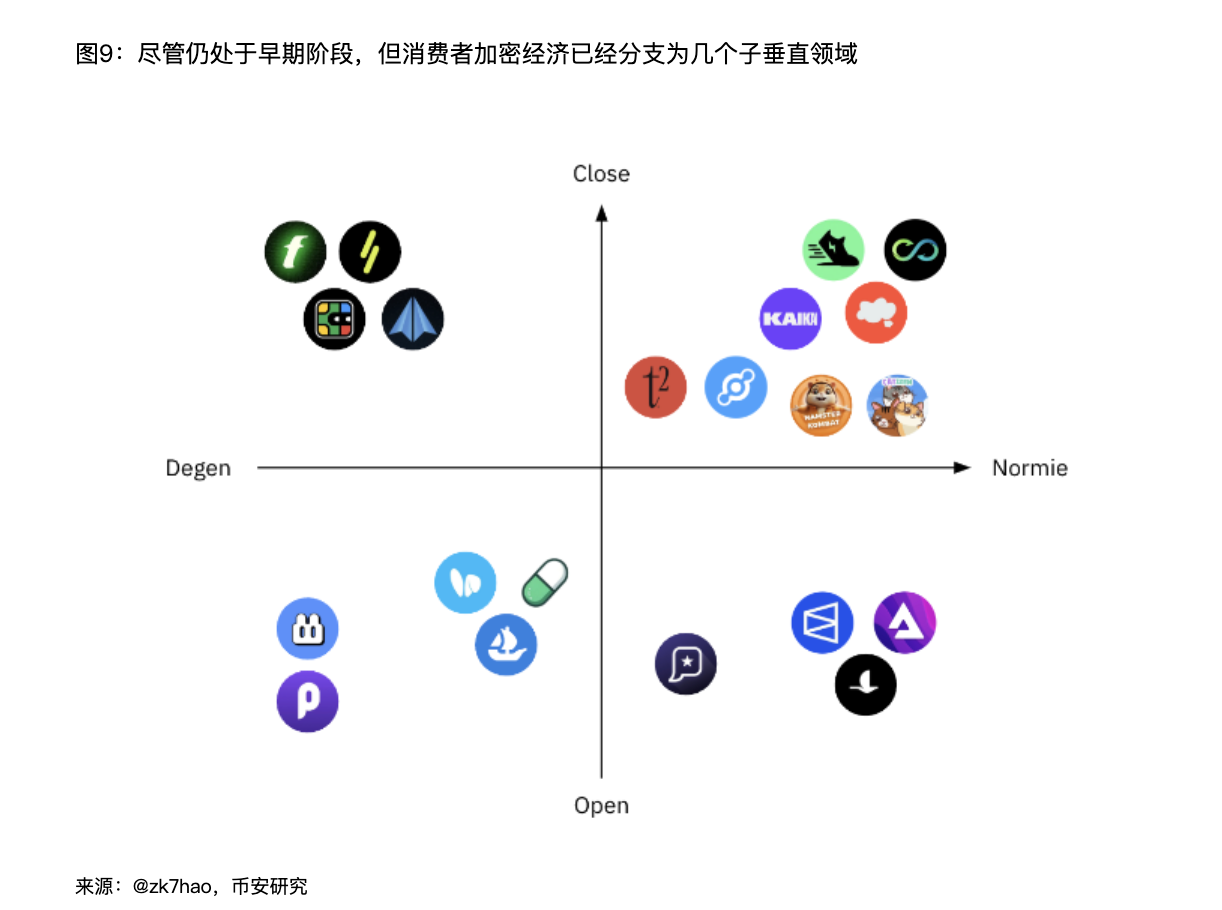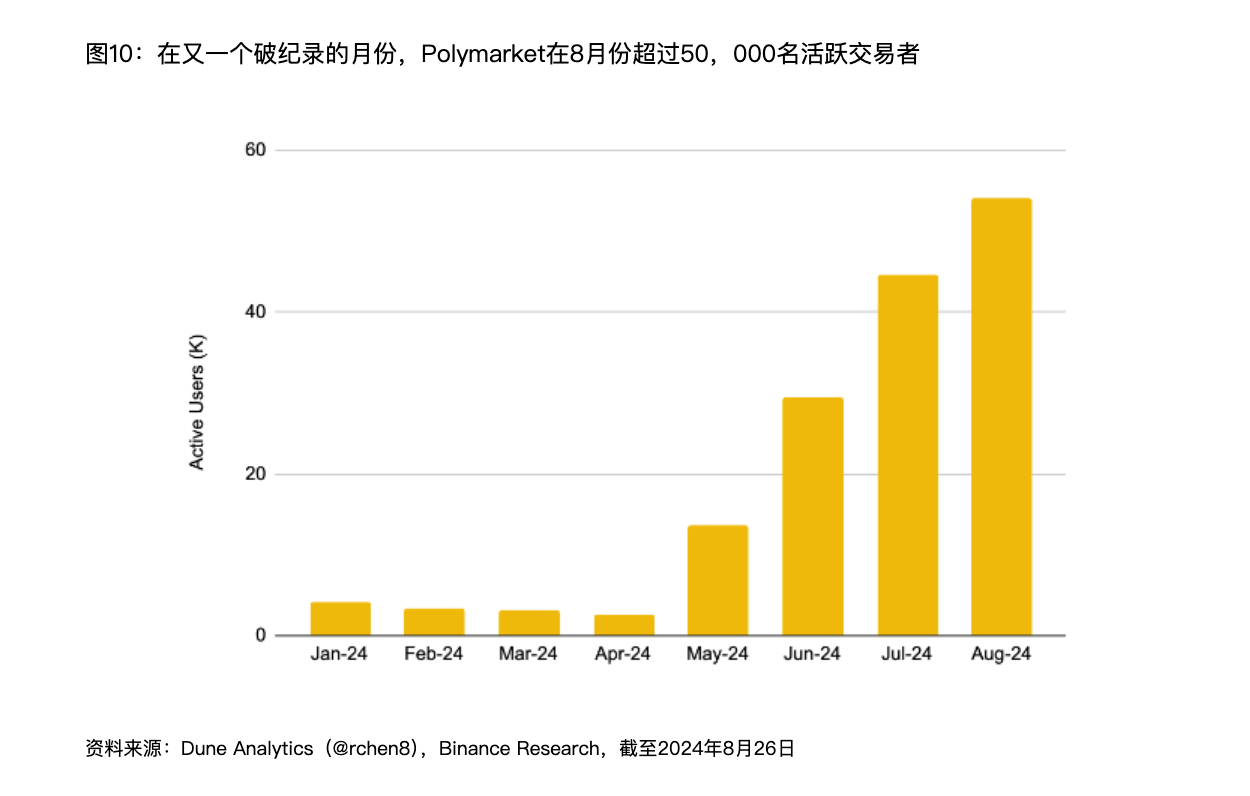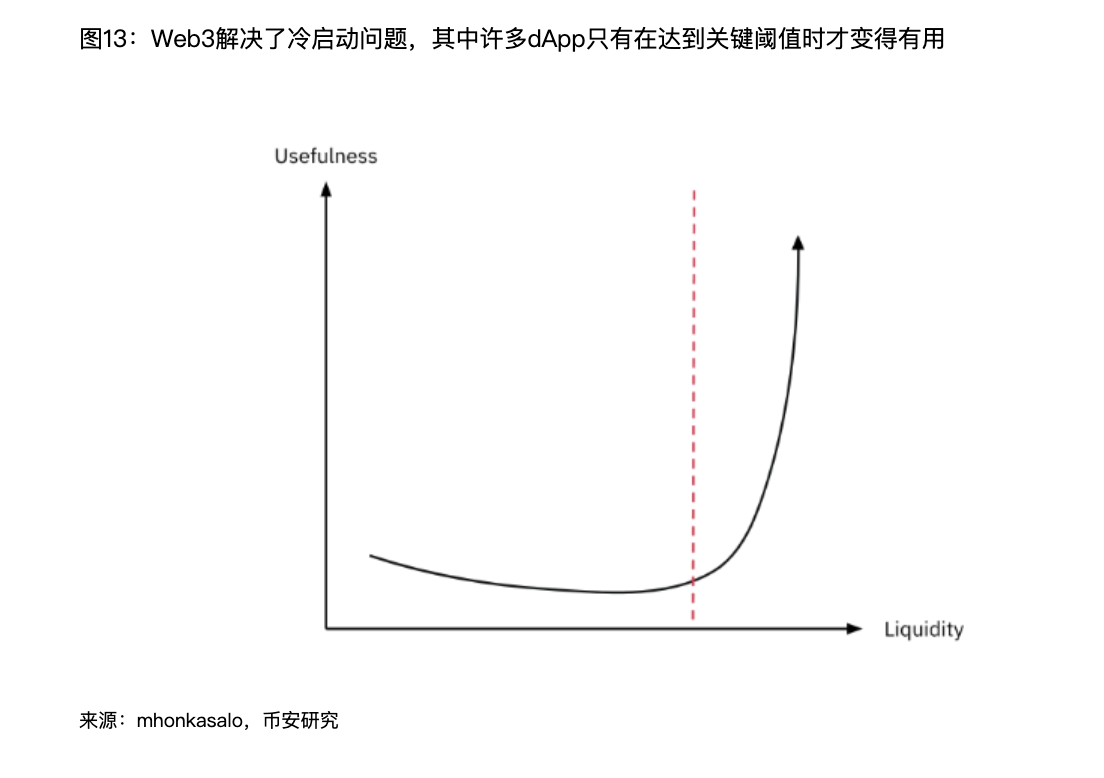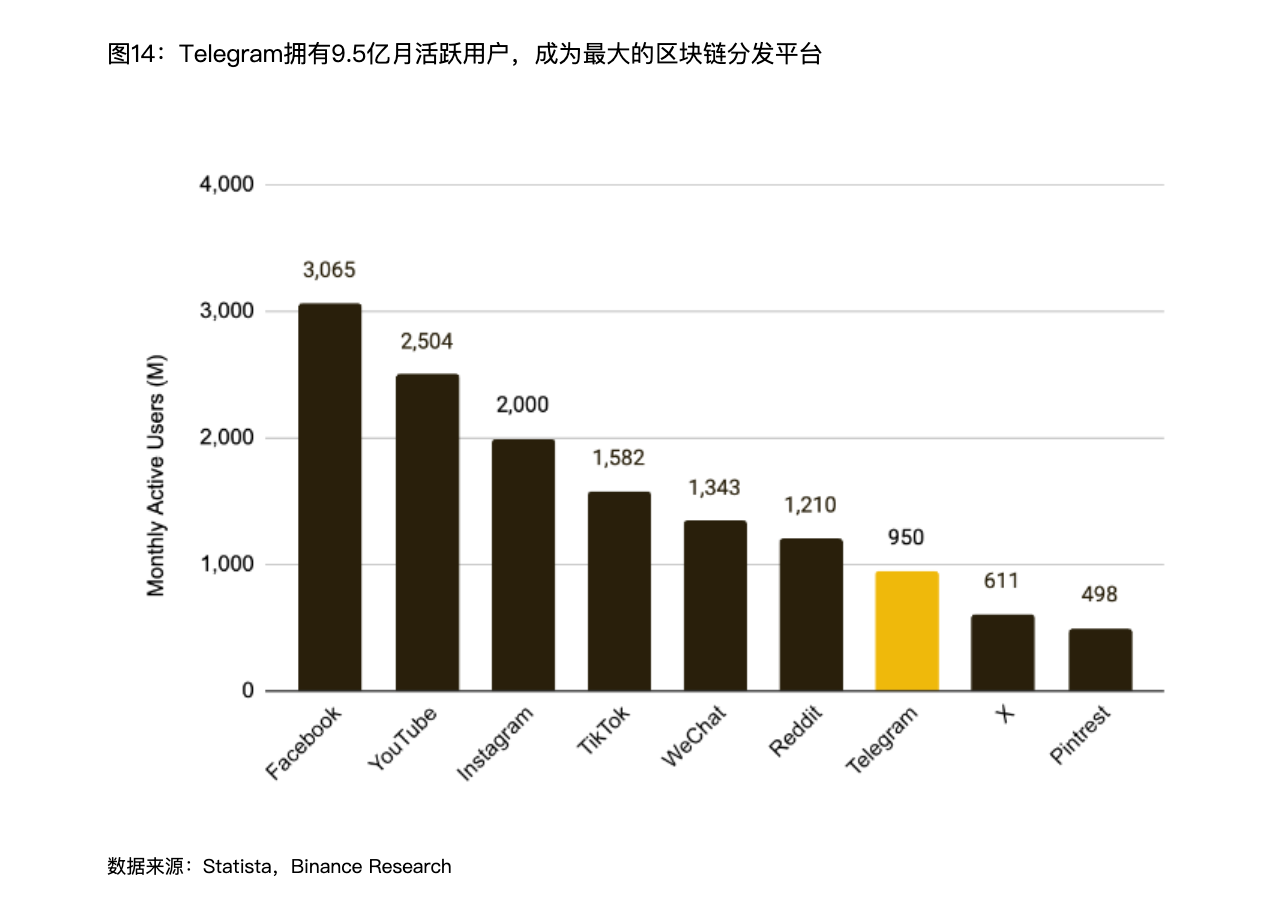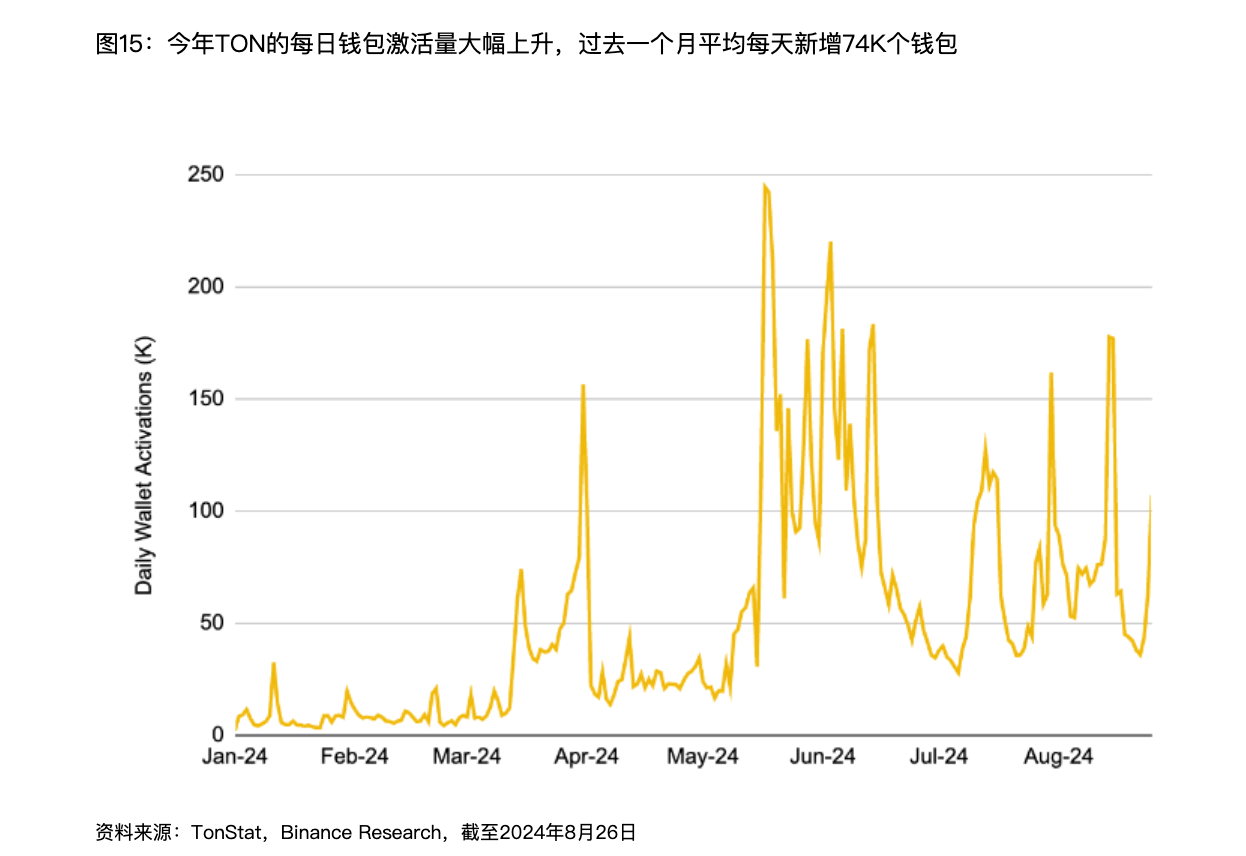Menafsirkan laporan Binance: Seberapa jauh Web3 dari menjadi nama rumah tangga?
Penulis asli: TechFlow
For a long time, the crypto industry has been more like a self-entertainment.
Constantly creating tradable assets and concepts within a limited scope, but never really entering other industries.
Web3, how far is it from becoming a household name?
On August 29, Binance released a report titled Web3: A Household Name, analyzing multiple aspects including the current adoption of Web3, industry use cases, exposure and promotion, and usage scenarios, in an attempt to answer the above questions.
Considering the length of the report, TechFlow has compiled and organized the key points and charts in the report.
Singkatnya;
-
While Web3 has made significant progress in key innovation and adoption metrics, it is still in the minority compared to Web2. Active on-chain users account for less than 1% of the global population, and the networks average retention rate is 5.4%. In comparison, 67.1% of the worlds population uses the internet, and Web2 retention rates are much higher, with a good baseline rate considered to be between 25-40%.
-
Two clear market trends are distorting Web3 adoption and retention metrics. First, excessive speculation, especially around memecoins, leads to temporary demand and short-lived engagement. Second, investors’ intense focus on infrastructure projects obscures the fundamental development of consumer-facing dApps needed to drive lasting adoption among everyday users.
-
Building decentralized applications (“dApps”) that provide real utility to everyday users is critical to scaling Web3 and solving retention challenges. Consumer-focused Web3 dApps, especially those centered around speculation, social interaction, or gaming, have shown significant promise in attracting active users, as reflected in the growth of unique active wallets (“UAWs”) over the past year.
-
Expanding the presence of Web3 dApps across various distribution channels will be key to achieving broader market coverage, especially as overlap with the Web2 ecosystem becomes more prevalent. Leveraging existing product bases like Telegram or creating shortcuts to blockchains like Links can significantly increase exposure and leverage the huge network effect of Web2 users.
-
Less than 10% of leading Web3 dApps offer a native mobile experience. Given the increasing dominance of mobile internet traffic, enabling mobile accessibility is critical to attracting the most active users.
1. Adoption and retention
Note: The crypto index on the vertical axis of the figure takes into account various data such as active addresses, transaction volume, stablecoin activities, active developers, academic research, and new projects and contracts to form a basket index. It can be clearly seen that the upward trend has become clear, indicating that the market momentum is stable.
Adoption has a long way to go: there are approximately 54.4 million active addresses on-chain — less than 1% of the world’s population.
An analysis of blockchain networks with dApps shows high churn rates among users of Web3 products.
A prime example is Starknet, where user retention dropped dramatically from 18.0% after March to just 4.3%. This drop is likely due to the end of their airdrop campaign, suggesting that speculative incentives have limited impact on long-term engagement.
2. What trends are shaping Web3 today?
First, outside of Bitcoin, memecoin speculation seems to dominate the public discourse of cryptocurrency. As the hype fades after two or three months, user interest also fades, resulting in short-lived participation as users chase the next speculative opportunity.
Second, large-scale infrastructure and small-scale dAPP.
This disconnect between infrastructure development and application creation stems from the current state of demand within the industry. One reason for this is that consumer crypto dApps still struggle to find consistent product-market fit, making them riskier due to their subjective requirements. In contrast, infrastructure projects offer more concrete data points to reference.
Third, the crypto market seems to be stuck in a trap of bloating its infrastructure without allowing dApps to achieve the same success.
Give it some more time? If Web3 follows a similar trajectory, it’s only a matter of time before the focus shifts from infrastructure to consumer applications, which are ready for mass adoption and attention.
3. Crypto applications and use cases
We’re seeing a similar trend in Web 3, with consumer dApps driving growth in unique active wallets (UAWs).
But unfortunately, building for the consumer market is one of Web3’s toughest challenges, and it’s not just a question of crypto ownership or financialization.
There are several paths for future dApps:
– Competing with existing strengths of cryptocurrency (such as speculation) and building entirely new verticals where there is no established demand;
– Improve Web2 use cases by bringing them on-chain, even though this risks directly competing with Web2 applications. Social media, payments, and gaming are already well established in Web2, so the tricky question becomes: what will incentivize users to operate on-chain, rather than using their current off-chain applications?
Some products are already beginning to demonstrate what’s possible when consumer experience is combined with decentralized systems.
One notable difference between this new generation of dApps and those that came before is that many of them now cater to a mainstream audience. Users use familiar methods like email or social login (usually in addition to wallets), pay with credit cards, and don’t need to worry about network compatibility or gas fees.
The productization of speculation has already been successful on platforms like Polymarket (prediction market) and Pump.fun (tokenized startup platform). Both combine harvester speculation with utility, resulting in products that appeal to consumers.
Farcaster’s most successful application, Warpcast, demonstrates potential and can help mitigate volatility for users as more high-value use cases are developed. Additionally, the introduction of features such as frameworks and open actions allows these platforms to attract dApps from outside of their native ecosystem, providing greater flexibility to engage users directly through social interfaces.
In addition, about Web3 games:
One of the most popular innovations in this cycle is the T2E (Click to Earn) game on the TON blockchain.
Even accounting for the possibility of inflated metrics, these numbers exceed anything we’ve seen in Web3 games to date, showing the potential for this model to attract a massive user base.
While content and infrastructure are key components of the gaming industry, distribution remains a critical factor for success. In order to bring billions of gamers onto Web 3, Web 3 games must be accepted by traditional game distribution platforms such as the Apple App Store, Google Play Store, Steam, Xbox, and PlayStation. Supplementing these efforts with strong marketing and a robust social media presence is also critical to fostering user investment in the culture these games create.
4. Distribution: A necessity to expand market reach
A typical Web3 dApp user funnel includes steps such as user acquisition, wallet connection, account funding, and activation. Each step has challenges and relies on users completing the previous step without falling off.
Without sufficient users and liquidity, many Web3 dApps will struggle to stay “alive.” A strong distribution strategy is critical to bootstrapping these dApps to a useful level.
dApps built and distributed on Telegram may face less competition in the early stages, allowing them to activate users more effectively. Meanwhile, Telegram’s revenue is currently $45 million, but comparing it to WeChat — when it has a similar user base — illustrates the potential for billions of dollars in revenue.
This highlights the opportunity to acquire untapped users at a low cost and monetize them at a higher rate through in-app purchases, subscriptions or advertising sharing models.
The Mini app revolution takes distribution to the next level by providing a simplified interface that is familiar to a global audience.
Catizen in particular reported a 7% conversion rate — significantly higher than the 0.66% average for other Telegram encrypted interactions — highlighting the channel’s potential for customer acquisition.
To take this distribution channel to the next level, it will be interesting to see if the mini-app ecosystem can replicate its success in more popular areas like DeFi. The opportunity is there, especially as T2E games have already attracted user attention and liquidity, which may trickle down to other mini-app categories. The competitive advantage will flow to projects that can provide a simplified experience for complex on-chain functions.
Kesimpulan
Making Web3 a household name is indeed uncharted territory. In a space where new technologies are constantly emerging and narratives are shifting rapidly, additional variables always come into play:
-
User behavior: Serving Web2 users and Web3 users requires understanding different cultural backgrounds. The languages, preferences, and behaviors of these groups vary greatly, which affects product design and user experience.
-
Product Complexity: Web3 is inherently more complex than Web2. While improving the user experience through account abstraction, smart wallets, and better on-chain ramps can help, the nuances of on-chain operations, wallet management, and tokenomics may take time to gain wider adoption.
-
Post-acquisition engagement: Engaging users post-acquisition in Web3 is different than traditional Web2 strategies. Customer experience programs, email marketing, and other standard Web2 engagement strategies do not translate seamlessly to an on-chain environment. Many dApps rely on wallet-based logins, leaving little room for traditional outreach or ongoing engagement methods. Without clear channels to connect with users, Web3 dApps must find ways to maintain relationships and improve retention.
-
Brand awareness: While some Web 3 networks like Solana and Berachain have begun to build well-known brands, it is more important for dApps to cultivate a strong community around their products.
-
Adapting for growth opportunities: In some cases, utility can emerge around speculative elements, particularly where social storytelling intersects with the attention economy — such as through memes that act as positive-sum (vs. zero-sum) social narratives.
Furthermore, expanding the presence of Web 3 dApps across various distribution channels will be key to achieving wider market coverage, referencing Telegram.
Ultimately, a great product with mediocre distribution can still find success, but a subpar product with great distribution cannot. The challenge for Web3 founders is to find the balance between the two. As we move forward, we look forward to seeing the next generation of dApps driving the coming wave of adoption and retention.
This article is sourced from the internet: Interpreting the Binance report: How far is Web3 from becoming a household name?
Original author: Rhythm Worker, BlockBeats Bitcoin doesn鈥檛 need politicians, but politicians need Bitcoin. With U.S. President Biden announcing that he will not run for reelection, Vice President Kamala Harris has become the most powerful contender for the Democratic nomination. Although we previously learned that Harris was not familiar with cryptocurrency, recent movements show that she seems to be learning this field quickly. Encryption has become a compulsory course for politicians Prior to today, Harris only involvement with cryptocurrency was hiring the former chief technology officer of the worlds first sports team to accept Bitcoin as her director of scheduling and advancement. Financial disclosures also show that Harris and her husband have never been involved in the cryptocurrency field, preferring to invest in government bonds and emerging markets. Yet, less than…

